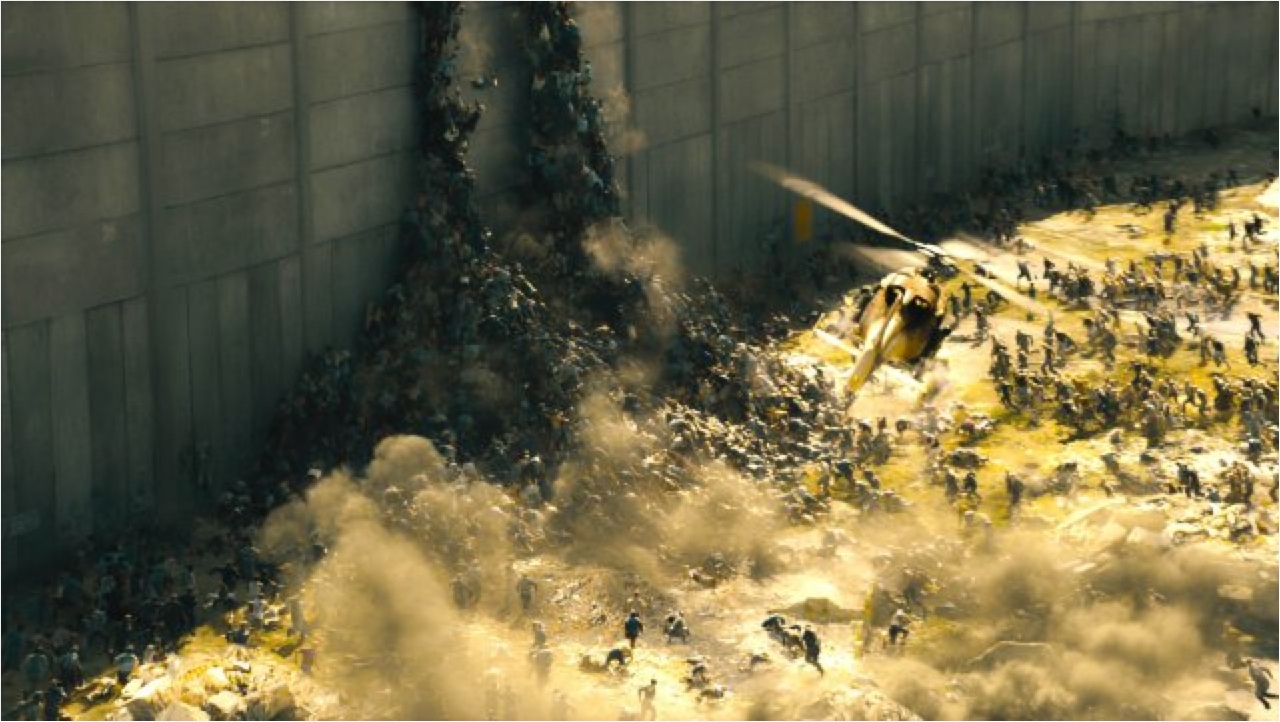Brraaiins! How zombies overran pop culture
The notion of zombies dates back at least 400 years.
They moan. They bite. They shuffle. Or sometimes, they sprint, swarm and carry on surprisingly intelligent conversation.
Zombies are something of an open-source pop-culture phenomenon. Unlike Dracula or Frankenstein, these Halloween monsters aren't based on a literary resource. In fact, the modern conception of a zombie dates back to 1968, in a movie that doesn't so much as use the word: George Romero's "Night of the Living Dead."
"He didn't call them zombies, and he didn't think about them as zombies," said Ozzy Inguanzo, a screenwriter and author of "Zombies on Film: The Definitive Story of Undead Cinema" (Rizzoli, 2014). But the public did, Inguanzo told Live Science.
Related: What could drive humans to extinction?
"Audiences saw these lumbering dead people, and they called them zombies … therefore, they became zombies," he said. Since then, the walking undead have wormed their way into video games, comic books — and even the classics (witness 2009's novel "Pride and Prejudice and Zombies").
From Haiti to Hollywood
The true zombie origin story dates back further than 1968, of course. The sad beginning of the myth harks back to Haiti during the 1600s and 1700s, when African slaves were worked to death on sugar plantations. As UC Irvine journalism instructor Amy Wilentz pointed out in the New York Times in 2012, it's not hard to see how the notion of a dead body, stripped of will and personality, forced to do the bidding of a sorcerer, would occur to an enslaved people.
The notion of zombies is still part of Haitian folklore. The belief is that, through magic or poison, a sorcerer makes a person fall ill and appear to die. After the family buries the body, the sorcerer retrieves the person, who is alive, but held in thrall. In a 1997 article in the medical journal The Lancet, researchers studied three real-life cases of "zombification" and diagnosed the three sufferers with catatonic schizophrenia, epilepsy and mistaken identity. In the final case, a 31-year-old woman with possible fetal alcohol syndrome was mistaken for another woman who had died 13 years before. The cases suggest that zombification has often been used to explain mental illness or brain disorders in rural Haiti.
Get the world’s most fascinating discoveries delivered straight to your inbox.
Zombies made the leap from Haitian religion to American entertainment in 1932, Inguanzo said, with a film starring Bela Lugosi and Madge Bellamy called "White Zombie." That movie, in turn, was largely inspired by a 1929 travelogue by William Seabrook, a journalist who also happened to be the kind of guy who, after failing to get a good enough description of the taste of human flesh from a West African chieftain, manages to acquire a hunk of flesh from a corpse to cook up himself. (In his 1931 book "Jungle Ways," Seabrook helpfully describes the taste as being very similar to veal.)
Zombies popped up in horror flicks over the next few decades, frequently in keeping with the Haitian voodoo theme, but sometimes branching out: The "Revenge of the Zombies" in 1943 took a sci-fi angle, with a Nazi scientist trying to create an army of the undead for Hitler.
Related: The 10 weirdest ways we deal with the dead
The modern zombie
But the quintessential zombie flick was actually inspired less by these films and more by vampires. Working off the 1954 post-apocalyptic novel "I Am Legend," by Richard Matheson, which tells the story of the last man standing in a world of vampirelike monsters, George Romero and John Russo told their own tale of a group of bickering humans threatened by the shuffling, moaning living dead.
"He took the Haitian component out of the previous character storylines and brought them here, to suburbia," Inguanzo said. "They were our friends, our relatives, our neighbors who were coming back from the dead."
Romero's zombies became the touchstone for those that would follow, with writers adding their own quirks to the genre. In 1985's "Return of the Living Dead," the zombies hungered not just for human flesh, but also for "braaaains." That idea stuck. The movie was also the first to introduce talking zombies, and perhaps more crucially, fast-moving zombies.
These days, fast-walking zombies are overtaking their shambling counterparts, at least on the big screen. The trend is, in part, inspired by video games like "Resident Evil," which first came out in 1996.
"Video games had a huge impact in bringing [zombies] back to the forefront," Inguanzo said. "These are easy bad guys to kill. There's no remorse there."
The zombie virus has also spread to the comic-book world, like the 2005-2006 Marvel series in which all of Marvel's superheroes get infected by a zombie virus. The superheroes stay strong and smart, but crave human flesh. Even wholesome Archie Comics has been bitten by the zombie bug, with a 2013 series called "Afterlife with Archie."
Zombie comics are, in turn, making the leap back to the screen, as with AMC's series "The Walking Dead." And Hollywood seems to be recognizing that zombies are moneymakers, turning out big-budget Brad Pitt spectacles like 2013's "World War Z."
"Those types of movies are focusing on explosions and action and adrenaline," Inguanzo said.
Originally published on Live Science.

Stephanie Pappas is a contributing writer for Live Science, covering topics ranging from geoscience to archaeology to the human brain and behavior. She was previously a senior writer for Live Science but is now a freelancer based in Denver, Colorado, and regularly contributes to Scientific American and The Monitor, the monthly magazine of the American Psychological Association. Stephanie received a bachelor's degree in psychology from the University of South Carolina and a graduate certificate in science communication from the University of California, Santa Cruz.



![Facts about the zombie phenomenon in pop culture, movies and gaming. [See full infographic]](https://cdn.mos.cms.futurecdn.net/2CtsswXKxwpjHMuWEJS68k.jpg)

